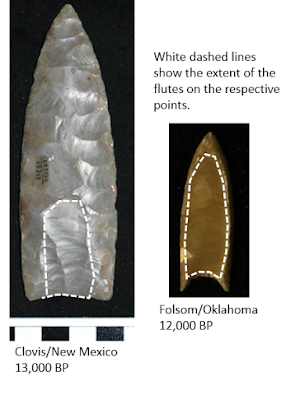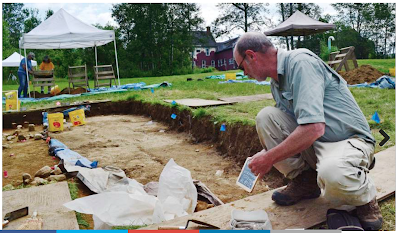 |
NH Archaeologist Dr. Richard Boisvert
at one Jefferson site |
{ tommclaughlin.blogspot.com } ~ It’s a risk to say they were the first humans in New Hampshire. Better to qualify and say instead something like: “Evidence indicates they were the first.” Because who knows? Some time in the future evidence of an earlier people may be discovered. I’m referring to those people most archaeologists call “Paleoindians.” At least one archaeologist I’ve spoken to, however, prefers the term “Paleoamericans” because that leaves open the possibility that the first humans in New England may not have been Indians, people whom those the rigidly, politically correct would call Native Americans.
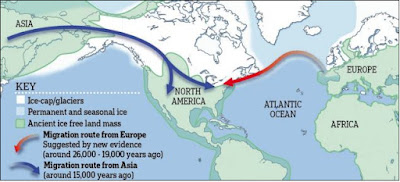
There are relatively recent theories afloat that the first Americans may have come from Europe — across the Atlantic on the southern edge of glaciers that covered both the North American and European continents during earth’s most recent glaciation — the Pleistocene Epoch. The period after which those glaciers retreated from what is now Maine and New Hampshire is called the “Holocene.” which began around 12,000 years ago and still extant. Paleoamericans left evidence that they were here immediately following glacial meltdown.
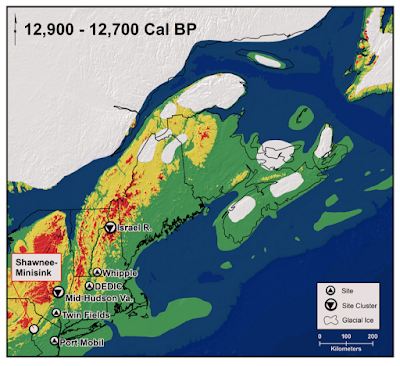
The most interesting of recent Paleoamerican discoveries I know of are in Jefferson, New Hampshire. Those excavations have taken decades but the most recent was during the summer of 2017. All that can be found after twelve millennia are stones, or “lithics” in archaeological parlance, because the organic material has long dissolved. Sources of the stone preferred by those ancient humans for toolmaking are scattered over Maine and New Hampshire but was mostly local for the Jefferson site at least. Availability of that stone may have been one of the reasons Paleoamericans visited.

The various Jefferson sites are close to Mount Jasper, about which I’d previously written here, and the Jefferson stone closely resembles Mount Jasper rhyolite. Excavations conducted at the various Jefferson sites have been under the supervision of Dr. Richard Boisvert, the soon-to-retire New Hampshire state archaeologist I had a chance to interview in June of last year. Boisvert is especially interested in the paleo period and I am too, so I was thrilled when he agreed to meet with me. I’ve read everything I can find on Maine and New Hampshire sites, some of which he authored.

Boisvert believes those early New Hampshire residents made clothing there. “How do you know that?” I asked, given that he has only stones to study. Well, his team found many artifacts called “gravers” which are flakes of “knappable” stone — stone which can be shaped by skilled artisans who strike it with other stones or with pieces of antler to produce a sharp edge for knives, projectile points, scrapers, and “gravers.” Gravers have a sharp point, not unlike a linoleum knife but smaller, and the point can be used to make the eye of a needle. Bone needles have been found at sites not old enough for organic material to have disintegrated.

The various Jefferson sites had at least one thing in common: they overlooked what was probably a game trail along which caribou traveled (and perhaps now-extinct megafauna as well). The proliferation of gravers indicates needle making which, in turn, indicates clothing manufacture. The proliferation of stone scrapers found there would support that hypothesis because they were used to remove residual flesh inside flensed animal hides.
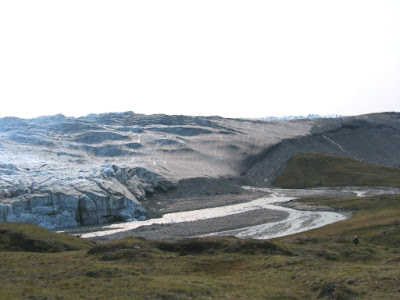
Dating the artifacts is done by consultation with other scientists such as geologists and botanists. Geologists analyze the post-glacial landscape, some of which had been lake bottom. Enormous amounts of water flowed from melting ice still retreating northwestward at the time and dams sometimes formed in valleys creating lakes. Many were temporary when dams failed and water drained through breaches. In some cases, smaller lakes and ponds remain to the present day and botanists analyze pollen samples from lake-bottom sediments. Thus they can determine climate conditions of 12,000 years ago by what kinds of plants produced the pollen.
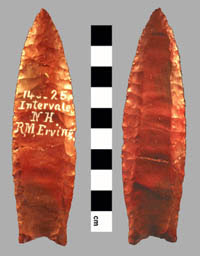 |
| Notice central groove or "flute" |
The Jefferson sites are forested now, but during the paleo period there were no trees and paleo hunters could have seen migrating herds miles away. They fashioned the distinctive, “fluted” spear points characteristic of the paleo period with which to kill them. Boisvert found other small bits of stone called “channel flakes” which are struck from those points to create the central groove or flute created for hafting. Boisvert said his team found 126 such channel flakes indicated extensive spearpoint manufacture.My wife and I visited Indian sites in the southwest just before I interviewed Boisvert. Artifacts are plainly visible on the surface there because there’s so little vegetation to obscure them. The first paleo artifacts were first discovered in Clovis New Mexico in 1929 and were dated to about the period of the Jefferson, New Hampshire artifacts. Clovis fluted points have since been found all over North America.








